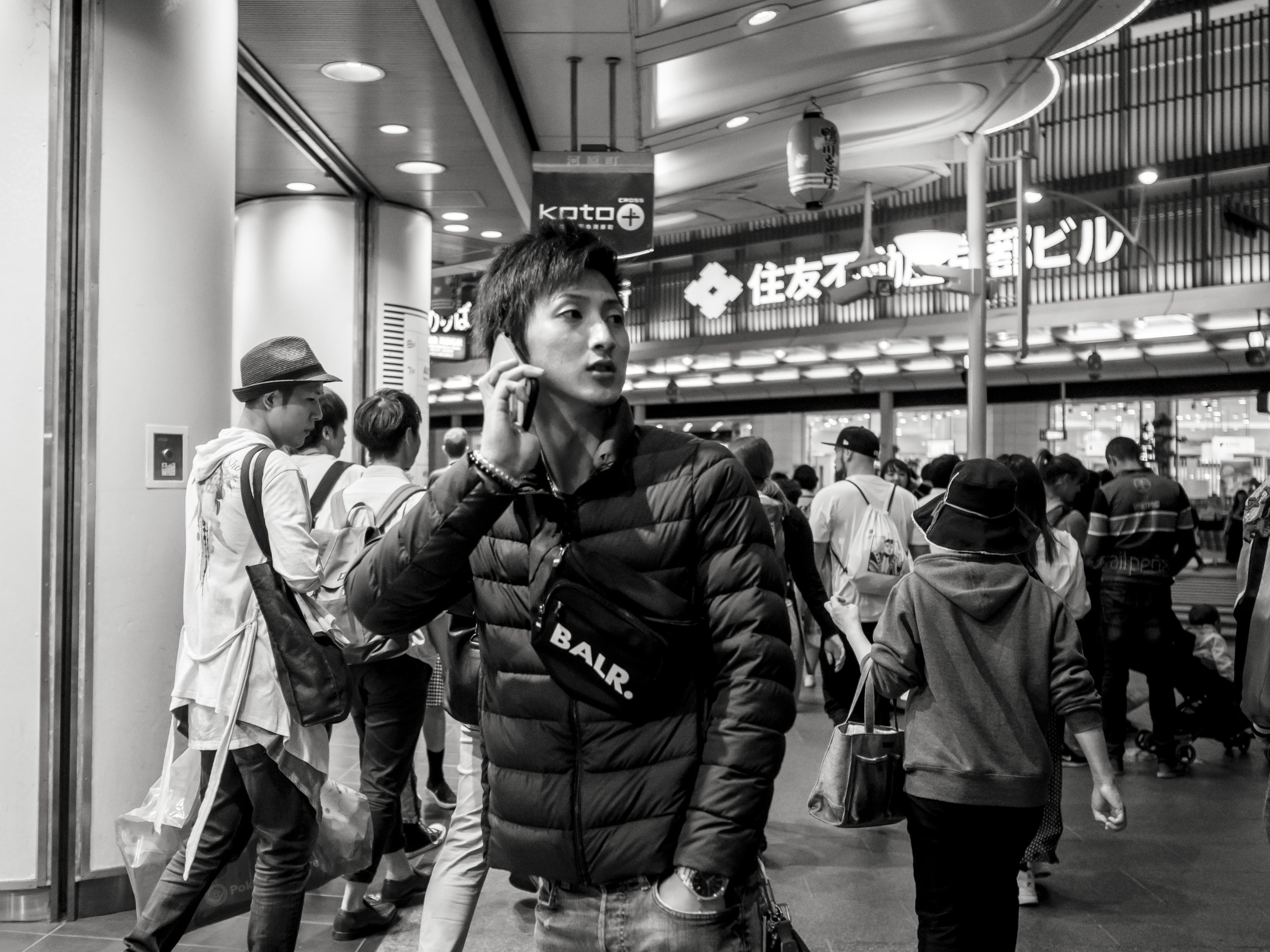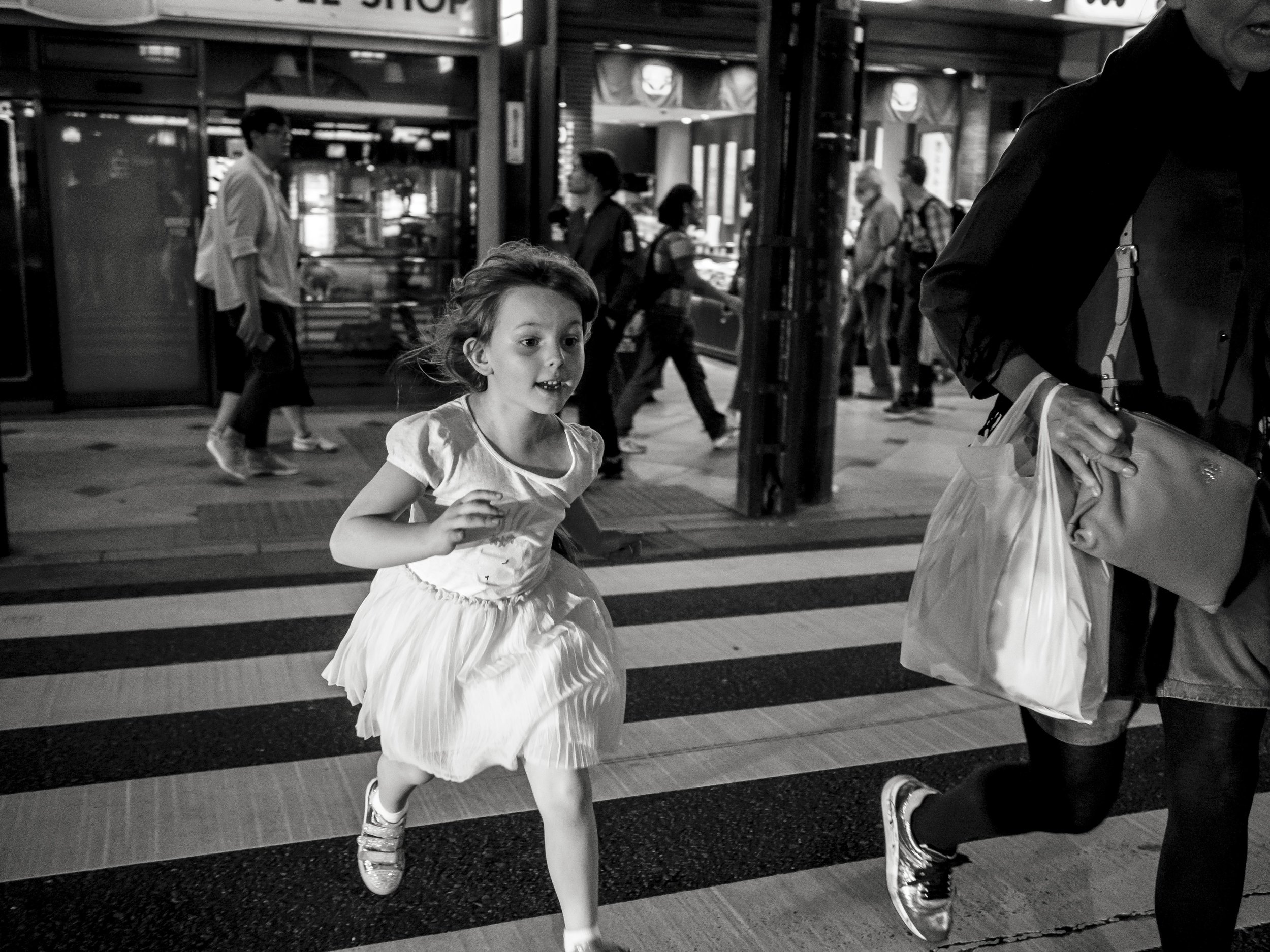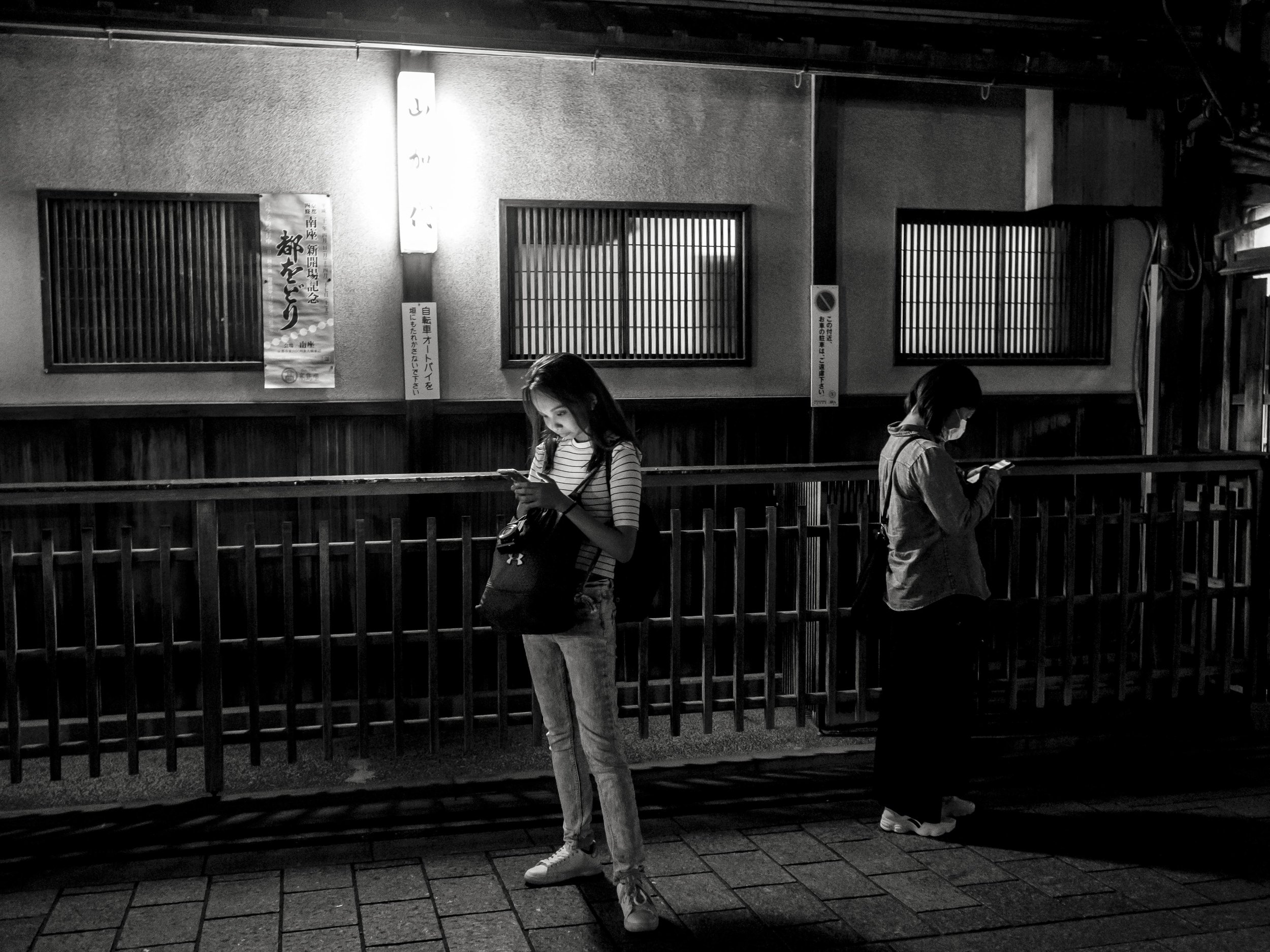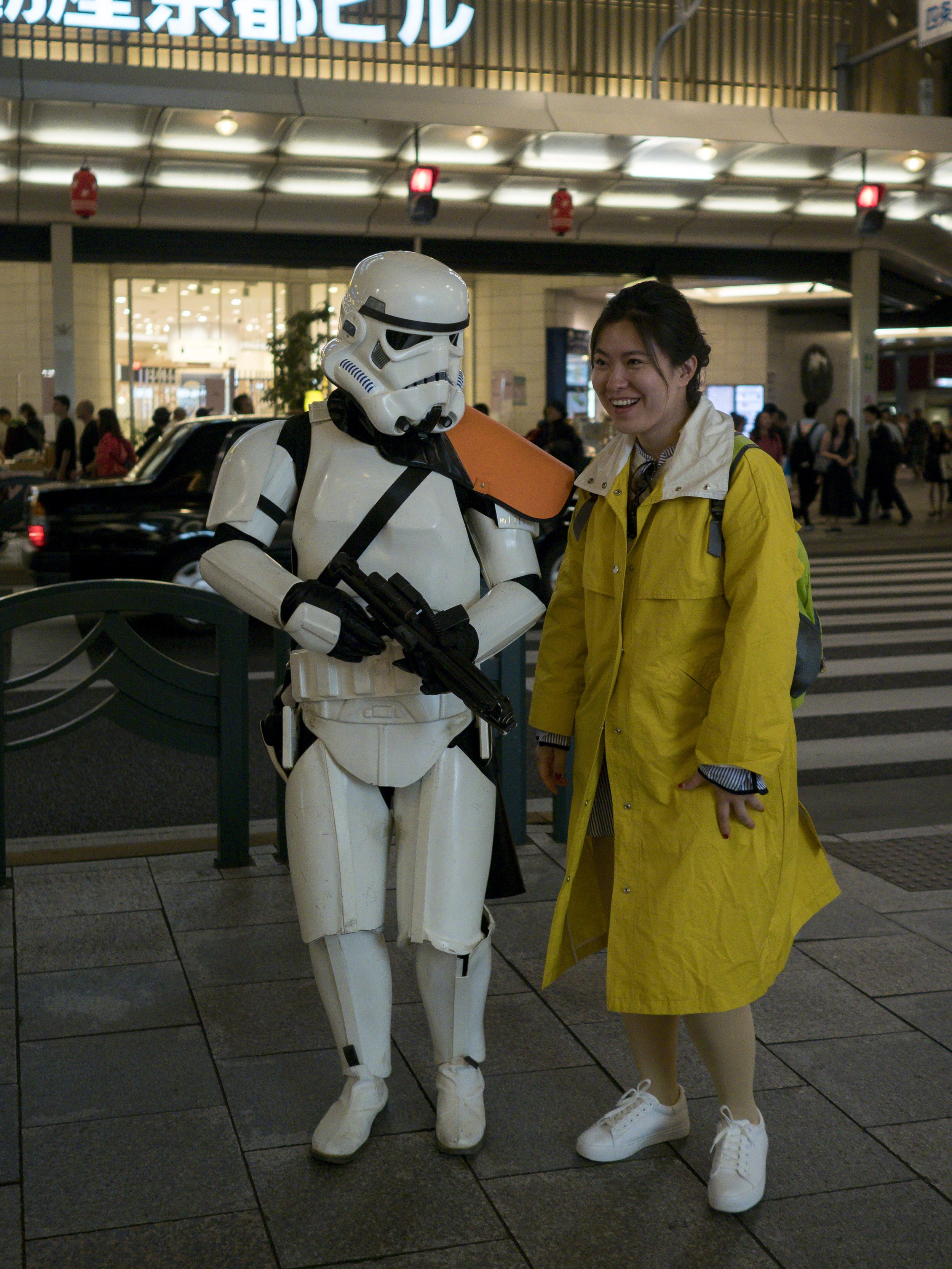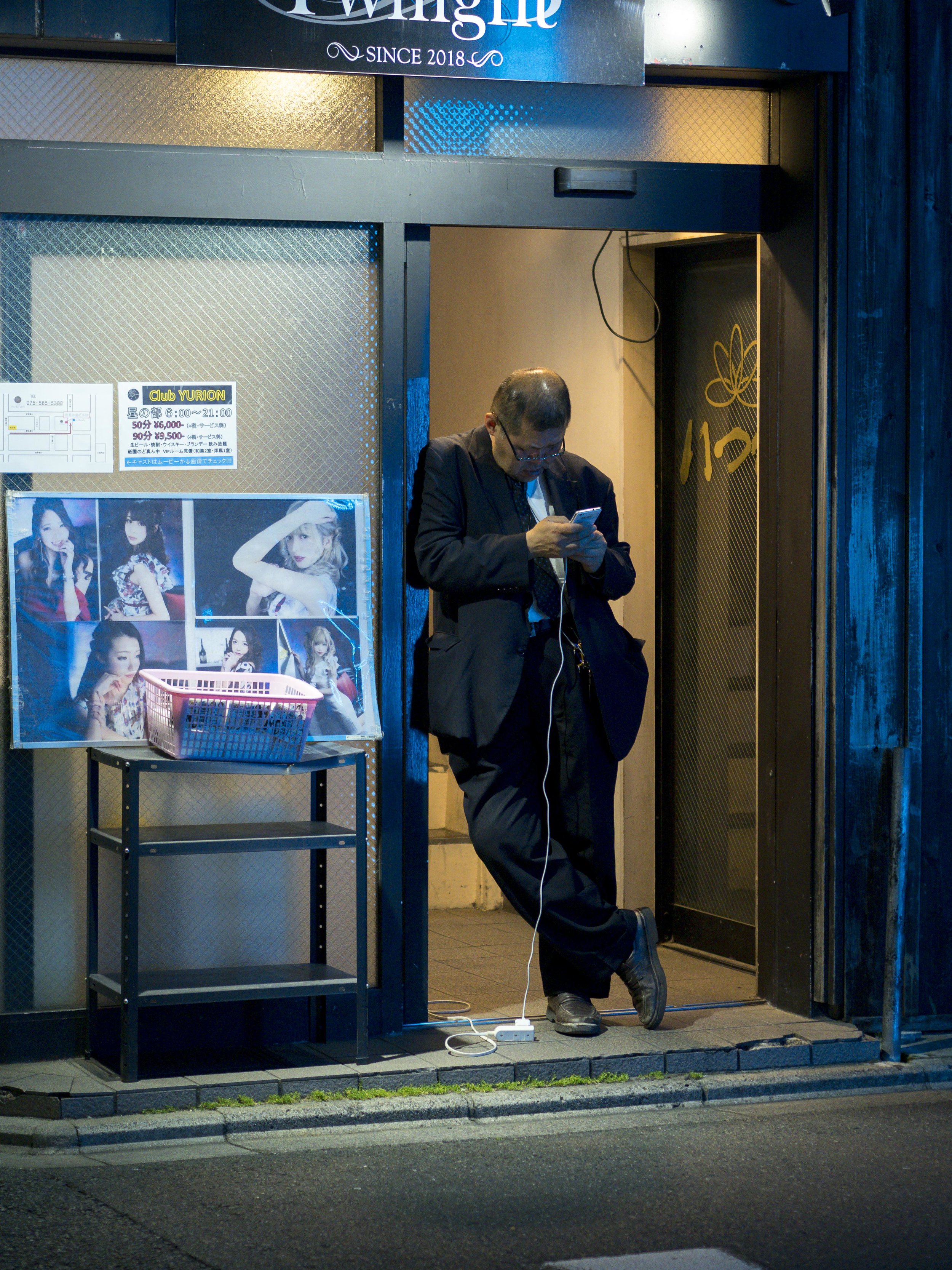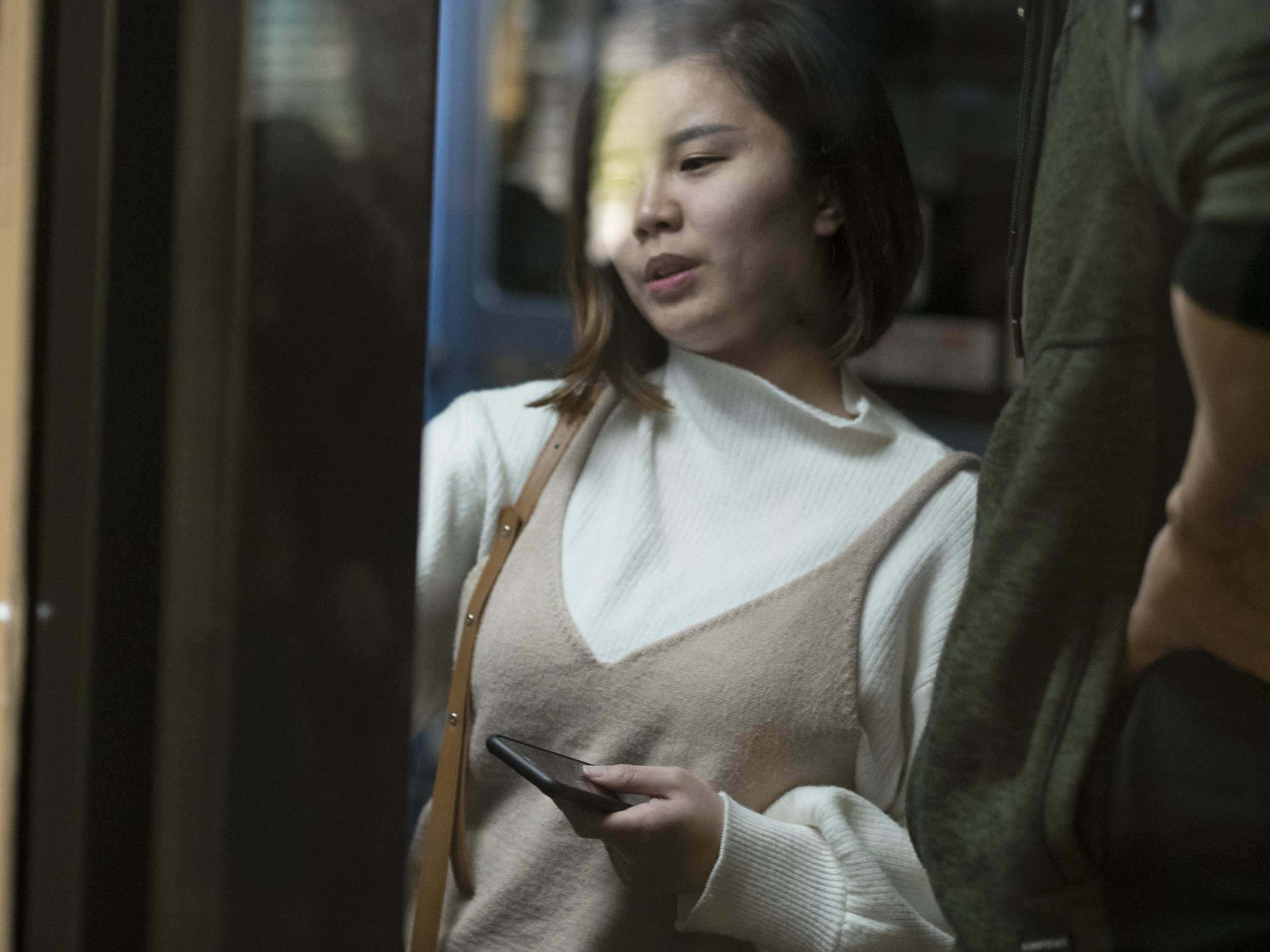This trip forced on me a change of basic technique. Loosing the use of one camera very early on, made me rely on a single camera and a pair of zoom lenses, which is not how I usually work.
The three primes, work horse lenses on every other trip, sat idly in my now uselessly overweight bag leaving me both a little frustrated and guilty that I was not using them. On the last night in Kyoto, I decided to go light and only take the 17 and 45mm lenses.
The value of their faster apertures soon came back to me, especially the 17mm lens’s very practical long transition Bokeh.
The true value of this lens comes with it’s ability to hold coherent detail in well out of focus areas. This matched with it’s slightly wide angle of view and small focal length (due to the format) makes it ideal for street style grab shots at wide apertures. This benefit comes at a price of course. You have to be aware of these included elements. The first image below could probably do with a little cropping to get rid of the left hand figure, still coherent (irrelevant) even at f1.8.
The main subject in the second image below is out of focus (best focus fell on the man in the hat to the left). If this shot was taken using my 12-40 or the Panasonic 20mm at equivalent or even slightly smaller apertures, this focus error would be a lot more obvious.
First the 17mm wide open or at F2.
And the 45mm, again mostly wide open or near.
As an ideal contrast to the 17mm and designed more commonly to suit, this is a true portrait lens with smooth and rapid Bokeh transition or in practical terms it easily makes a “hero” of the main subject. I personally (and this is highly personal), do not like to much the overtly super-Bokeh look. I generally prefer to have some subject context rather than just pleasantly smooth mush, so if I owned for example an f1.2 lens, after the one trick buzz of very strong drop off was exhausted* (although I fully admit it has a practical use to reduce ugly backgrounds), I bet it would be used at f2 or 2.8 most often, where it would have little benefit over the equivalent f1.8 lens.
For example the middle image of the set above, is a messy image. It only works (if it does at all for you) because of the balance of the messiness. With a faster aperture or longer lens, the plane of focus would be more defined and the out of focus subjects, the man’s sleeve and the distracting blob over the woman’s eye, less so. Would it make for a better image or not? I feel the “painterly” rendering rather it has rather than the more modern sharp/soft dynamic suits it better.
If you love your full frame, fast lens, super soft and powerful Bokeh rendering, then fair play and it is as relevant as any other technique, but remember, it is a bit like sugar. Too much can be addictive and mask other flavours. The best aperture may not be the widest available. A customer/colleague of mine recently showed me a series of work place portraits taken on his full frame camera a with an f1.4 105mm lens used wide open. The sharpness and smoothness of the Bokeh was impressive, but the strongest visual element in the images was the row of perfect “Bokeh Ball” yellow lights in the background, taking much of the visual power away from the human subjects. As good as they were, I could not help but think that they and the biting sharpness of the lens wide open were the true success stories of the image.
*Fully achievable at smaller apertures or even shorter lenses if needed, even if some post processing is needed. My one true “cut-out” lens is the 75mm f1.8, which is a powerful tool when used properly, but it wears thin when over used.

